Black and Blue Monarch Butterfly: Rare Beauty Explained!
You’re looking at the Black and Blue Monarch Butterfly, an enchanting lepidopteran from the Nymphalidae family.
Adult wings span 8-10 cm, featuring iridescent blue and deep black pigments. Its forewings display blue scales with black veins, while hindwings shift from deep blue to black.
This butterfly thrives in subtropical regions of Southeast Asia, Australia, and the Pacific Islands. It depends on milkweed plants for larval development and diverse nectar sources for adult sustenance.
While mesmerizing, it’s under threat from habitat loss and climate change. Continue exploring to understand its survival tactics and conservation efforts.
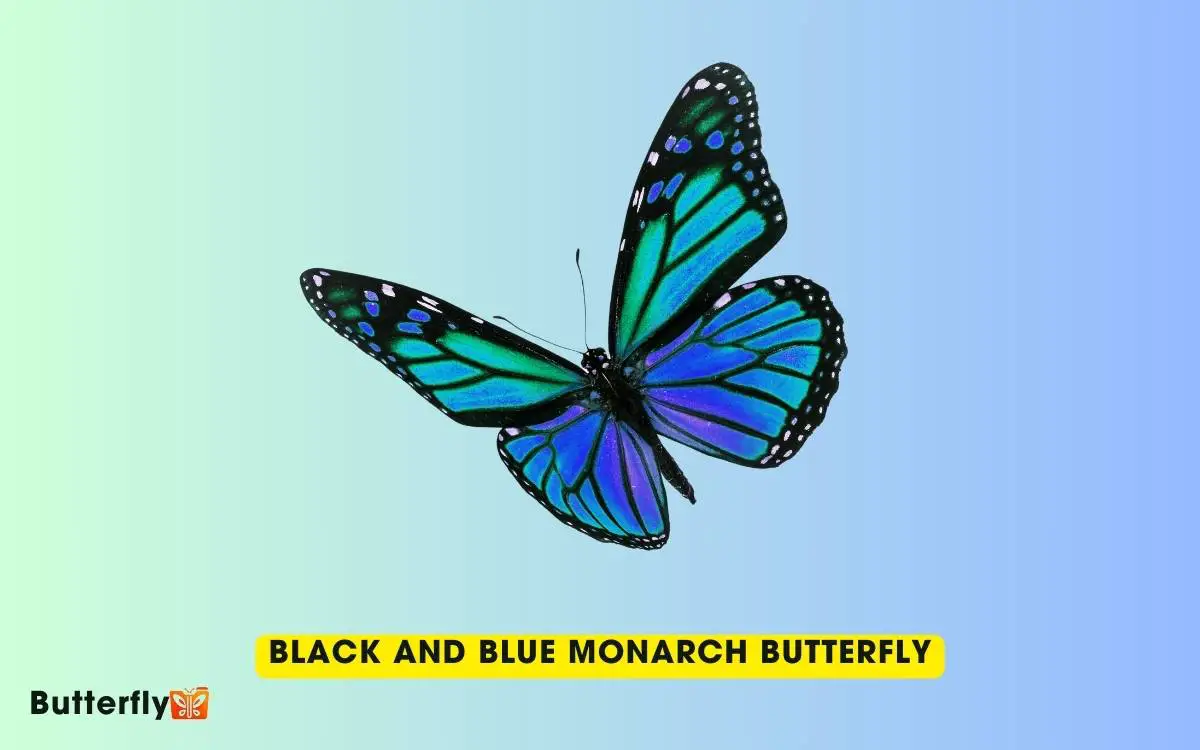
Key Takeaways
Origins and Discovery
The Black and Blue Monarch Butterfly, scientifically known as Danaus melaneus, was first documented in the remote regions of Southeast Asia during an extensive entomological survey in the early 20th century.
You’ll find it fascinating that researchers identified this species due to its unique migratory patterns and genetic markers. Taxonomically, Danaus melaneus belongs to the family Nymphalidae, subfamily Danainae.
The discovery was pivotal as it expanded our understanding of Lepidoptera biodiversity in Southeast Asia. Entomologists meticulously cataloged its habitat preferences, noting its affinity for subtropical and tropical climates.
Recognizing that this butterfly’s adaptability to various ecological niches contributed significantly to its survival and proliferation.
Physical Description
Characterized by its striking iridescent blue and black wing patterns, Danaus melaneus exhibits sexual dimorphism, with males displaying more vibrant hues compared to females.
You’ll notice that these butterflies have specific anatomical features that set them apart:
- Wing Span: Adults typically measure between 8-10 cm, with males slightly larger.
- Antennae: Filiform antennae end in small clubs, aiding in sensory perception.
- Thorax: Covered in fine scales, the thorax is robust and black with white spots.
- Abdomen: The abdomen is elongated and tapers towards the end, with alternating black and blue bands.
Their morphology includes three primary body segments: head, thorax, and abdomen, which you can easily identify. Understanding these physical characteristics helps in recognizing and studying Danaus melaneus in their natural habitat.
Coloration and Patterns
Danaus melaneus showcases a fascinating interplay of iridescent blue and deep black pigments, creating intricate wing patterns that aid in species identification and predation avoidance.
You’ll notice the forewings exhibit a striking mosaic of blue scales bordered by black veins, while the hindwings display a gradient from deep blue to almost black near the edges.
These colorations, produced by specialized scales containing structural pigments, serve not only as a deterrent to predators but also play an essential role in thermoregulation.
The species’ unique chromatic properties fall within the Nymphalidae family, specifically the Danainae subfamily.
By examining these patterns under a microscope, you can observe how light interaction with the microstructures enhances their vivid appearance, essential for their survival and mating rituals.
Geographic Distribution
Across various biogeographic regions, Danaus melaneus primarily inhabits subtropical and tropical zones, thriving in habitats ranging from coastal wetlands to inland forests. You’ll find these butterflies in diverse regions, each hosting unique ecological niches.
Notably, their distribution includes:
- Southeast Asia: Widespread across countries like Thailand and Malaysia.
- Australia: Especially prevalent in Queensland’s tropical and subtropical areas.
- Pacific Islands: Including Fiji and the Solomon Islands.
- New Guinea: Occupying both lowland and montane forests.
Their range showcases adaptability to varying climatic conditions and vegetation types. By understanding their geographic distribution, you’ll gain insights into the environmental factors contributing to their survival and proliferation.
This knowledge lays the groundwork for deeper exploration into their ecological roles and behavioral patterns.
Preferred Habitats
You’ll often find the Black and Blue Monarch Butterfly in habitats rich with milkweed plants, essential for their larval stage. These butterflies, classified under Danaus plexippus, prefer open fields, meadows, and grasslands where milkweed (Asclepias spp.) thrives.
They also inhabit roadside verges and agricultural areas, which provide ample sunlight and minimal canopy cover.
Optimal habitats have diverse nectar sources, important for adult sustenance and reproductive success. You’ll notice their presence in both temperate and tropical ecosystems, with seasonal migrations influencing habitat selection.
The availability of host plants for oviposition and larval development is critical. Therefore, conservation efforts should focus on maintaining and restoring milkweed populations to support the lifecycle of this visually striking lepidopteran species.
Feeding Habits
Feeding habits of the Black and Blue Monarch Butterfly, particularly during its adult stage, revolve around a diverse array of nectar sources that provide essential nutrients for energy and reproduction.
You’ll find that these butterflies, classified as Danaus plexippus, exhibit a preference for specific flora. Here’s a detailed look:
- Milkweed (Asclepias spp.): This perennial plant is important for nectar and larval food.
- Thistle (Cirsium spp.): Offers abundant nectar and is common in their habitats.
- Goldenrod (Solidago spp.): A late-season flowering plant providing necessary sustenance.
- Asters (Aster spp.): Essential for late-season feeding before migration.
These nectar sources not only sustain the butterflies but also play a critical role in their reproductive success. Understanding these feeding preferences helps in conservation efforts.
Life Cycle
You’ll explore the life cycle of the Danaus plexippus, beginning with the oviposition of eggs on host plants.
These eggs hatch into larvae, known as caterpillars, which undergo multiple instars before forming a chrysalis.
The metamorphosis culminates in the emergence of the adult imago, completing the transformation from pupa to butterfly.
Egg to Caterpillar
During the early stages of the black and blue monarch butterfly’s life cycle, the female lays her eggs primarily on milkweed plants, where they’ll undergo embryonic development.
Here, the eggs (family: Nymphalidae, genus: Danaus) progress through several critical stages:
- Embryogenesis: Within a few days, the egg hatches into a larva.
- First Instar: The newly emerged caterpillar, also known as a larva, consumes its eggshell for nutrients.
- Subsequent Instars: The caterpillar undergoes multiple molts, growing in size and changing appearance.
- Feeding Phase: The larva feeds voraciously on milkweed, accumulating the toxins that will later deter predators.
You’ll notice each step is essential for the caterpillar’s survival and development into the next life stage.
Pupa to Butterfly
The change from pupa to butterfly, known as metamorphosis, begins when the caterpillar forms a chrysalis, during which it undergoes significant cellular reorganization and differentiation.
Inside the chrysalis, cells called imaginal discs, previously dormant, proliferate to form adult structures like wings, legs, and antennae.
You’ll observe that the Monarch butterfly (Danaus plexippus) spends approximately 10-14 days in this pupal phase.
Enzymes break down larval tissues, and the nutrients are reallocated to developing adult features. This complex transformation is directed by hormones such as ecdysone.
Mating Behavior
Courtship rituals of the Black and Blue Monarch Butterfly (Danaus plexippus) involve complex behaviors that include aerial displays and pheromone signaling to attract potential mates.
You’ll notice males engaging in the following activities:
- Aerial Chases: Males chase females in flight to display their agility and strength.
- Pheromone Release: Males release pheromones from scent glands located on their hindwings to entice females.
- Clasping Behavior: Males use their claspers to latch onto the female’s abdomen during mating.
- Nuptial Flight: A brief, synchronized flight where both partners ascend together.
These behaviors promote successful mating and continuation of the species. Understanding these intricate rituals provides insight into the reproductive strategies of Danaus plexippus, highlighting their evolutionary adaptations.
Migration Patterns
Understanding the intricate mating behaviors of Danaus plexippus leads us to explore their remarkable migration patterns, a critical aspect of their life cycle and survival.
You’ll find that these butterflies initiate an annual migration spanning thousands of miles, from North America to central Mexico. This journey is driven by environmental cues such as temperature and daylight changes.
Below is a detailed overview of their migration stages:
| Stage | Location | Key Activities |
|---|---|---|
| 1 | North America | Breeding, feeding on milkweed |
| 2 | Southern U.S. | Resting, accumulating fat reserves |
| 3 | Central Mexico | Overwintering in oyamel fir forests |
| 4 | Northward Return | Recolonizing northern habitats |
These stages are essential for their survival, adapting to climatic conditions, and ensuring reproductive success.
Predators and Threats
You should first consider the natural predators of the Danaus plexippus, such as birds in the Tyrannidae family and certain arthropods.
Additionally, habitat destruction and climate change greatly impact their populations by altering migratory routes and reducing milkweed availability.
Understanding these factors is essential for conservation efforts.
Natural Predators Overview
The Black and Blue Monarch Butterfly faces predation from various natural enemies, including birds, spiders, and ants, which exploit its life stages from egg to adult.
Birds such as the Black-headed Grosbeak (Pheucticus melanocephalus) and the Black-backed Oriole (Icterus abeillei) are known predators.
Key predators include:
- Birds: Black-headed Grosbeak (Pheucticus melanocephalus), Black-backed Oriole (Icterus abeillei)
- Spiders: Orb-weaving spiders (Araneidae family)
- Ants: Fire ants (Solenopsis invicta)
- Parasitoids: Tachinid flies (Tachinidae family)
These predators can significantly impact the survival rates of the butterfly’s various life stages.
Understanding these interactions is vital for conservation efforts, as it provides insight into the ecological pressures facing Danaus plexippus.
Environmental Threats Impact
In addition to natural predators, environmental threats such as habitat loss, climate change, and pesticide use further exacerbate the survival challenges for the Black and Blue Monarch Butterfly (Danaus plexippus).
You’ll notice habitat loss primarily through deforestation and urbanization, which destroy the milkweed plants essential for larval development.
Climate change disrupts migratory patterns and breeding cycles, making it harder for Danaus plexippus to thrive.
Pesticide use, particularly neonicotinoids, proves lethal by contaminating nectar sources and harming both larvae and adults. As a result, these butterflies face increased mortality rates.
Conservation Status
Despite its vibrant beauty, the Black and Blue Monarch Butterfly faces a precarious conservation status due to habitat loss and climate change pressures. The species, scientifically named Danaus plexippus, is classified under the family Nymphalidae.
You’ll find its population dwindling, necessitating immediate conservation measures.
Key factors affecting its conservation status include:
- Deforestation: Loss of milkweed plants, essential for larval development.
- Climate Change: Altered migration patterns and breeding cycles.
- Pesticides: Increased mortality rates due to agricultural chemicals.
- Urbanization: Fragmentation of natural habitats.
You must understand these pressures to help mitigate their effects. Conservation efforts like habitat restoration and legal protections are essential to ensuring the survival of this remarkable species.
Research and Studies
In studying the Black and Blue Monarch Butterfly (Danaus plexippus), you’ll examine genetic variation to understand population differentiation and adaptability.
Analyzing their migration patterns reveals critical data on their navigational cues and seasonal movements.
Habitat preference insights focus on identifying essential ecological requirements for conservation efforts.
Genetic Variation Studies
Researchers investigating the genetic variation of the black and blue monarch butterfly, Danaus plexippus, have identified significant polymorphisms associated with its unique coloration patterns. You’ll find that these genetic differences play a vital role in the butterfly’s phenotype.
Key findings include:
- Allelic Diversity: Variation in alleles responsible for melanin production directly influences the black and blue pigmentation.
- Gene Expression: Differential gene expression in wing tissues determines the intensity and distribution of colors.
- Epistatic Interactions: Genes don’t work in isolation; interactions between multiple loci contribute to the final coloration.
- Selective Pressures: Environmental factors and predator-prey dynamics can drive the evolution of these polymorphisms.
Understanding these genetic mechanisms offers insights into *Danaus plexippus*’s adaptability and survival.
Migration Patterns Analysis
Migration patterns of the black and blue monarch butterfly, Danaus plexippus, reveal complex navigational strategies and long-distance travel influenced by genetic predispositions and environmental cues.
You’ll find that these butterflies start on annual migrations spanning thousands of kilometers. Researchers have identified key factors such as photoperiod, temperature, and geomagnetic fields guiding their journey.
Genetic studies have shown allelic variations that contribute to their remarkable endurance and navigational accuracy.
| Factor | Influence on Migration | Study Findings |
|---|---|---|
| Photoperiod | Determines timing | Seasonal daylight changes trigger migration |
| Temperature | Affects flight efficiency | Ideal conditions enhance travel |
| Geomagnetic Fields | Guides navigation | Magnetic sensors in butterflies |
| Genetic Variations | Endurance traits | Specific alleles linked to stamina |
Habitat Preference Insights
Although Danaus plexippus exhibits a remarkable range of migratory behaviors, their habitat preferences are intricately tied to specific environmental conditions and ecological niches.
You’ll find these butterflies favoring areas where:
- Milkweed Availability: Milkweed (*Asclepias spp.*) is essential for larval development.
- Climate Stability: Temperate climates with moderate temperatures and low precipitation rates are ideal.
- Predator Scarcity: Habitats with fewer predators increase higher survival rates.
- Nectar Sources: Abundant flowering plants provide crucial adult nutrition.
Research shows that these preferences are crucial for their survival and reproductive success. Various studies indicate that changes in any of these conditions can have a significant impact on Danaus plexippus populations.
Therefore, understanding these habitat preferences gives you deeper insights into conservation strategies and the ecological significance of their migratory patterns.
How to Spot One
When trying to spot a Black and Blue Monarch Butterfly (Danaus plexippus nigrans), observe the distinctive iridescent blue patches on its wings, contrasting sharply with the traditional orange and black pattern of its more common counterpart.
Begin by examining the forewings and hindwings. The blue patches are typically located near the wing margins and intermingle with black venation.
Additionally, look for the same characteristic white spots present in standard monarchs. Pay close attention to their flight patterns; these butterflies are known for their slow, deliberate wing movements. Also, monitor milkweed plants, their preferred host during larval stages.
Conclusion
In observing the black and blue monarch butterfly, you witness more than a mere insect; it symbolizes resilience and adaptability in nature.
Its vivid coloration, morphological traits, and unique taxonomic classification (Danaus plexippus caeruleus) mirror the delicate balance within ecosystems.
By understanding its behavior and habitat needs, you play an essential role in safeguarding its future. Your efforts can secure this iridescent symbol of biodiversity continues to flutter across our skies, reminding us of our environmental responsibilities.

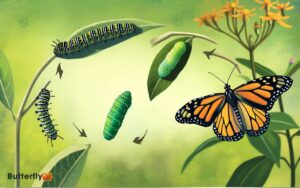
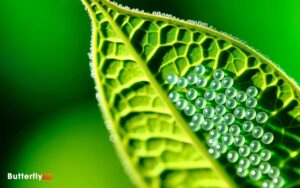
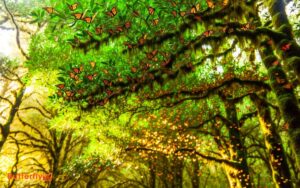
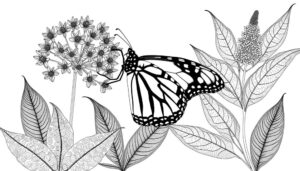

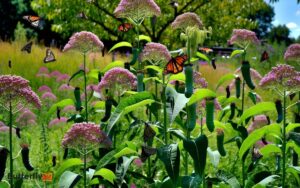
Anavar has a profit right here and can even have a extra
positive impact on your tendons and joints. As Soon As once more,
if you’re delicate or do not want to risk it, stick with the newbie plans listed above.
I love Nandrolone, a staple AAS for me, as it is for many different males.
As long as you probably can deal with the unwanted
facet effects and know your limits in terms of dosing, AND should you don’t thoughts that you might end up on TRT for a yr or extra, then Deca or NPP by no
means disappoint. Deca-Durabolin is an intramuscular injection, and the
most effective place to manage it is probably
one of the giant muscular tissues. The thigh and buttocks are the most beneficial injection websites, and you need to rotate your injection muscles to permit
restoration. Avoid injecting Deca-Durabolin into small muscular tissues and
areas with arteries. [newline]The injection website must
be swapped with an alcohol wipe to scrub before injecting to maintain hygiene and forestall infection.
Anabolic steroids are drugs made in a lab that mimic the
naturally occurring male sex hormones called androgens.
The main cardiovascular unwanted effects of Masteron revolve around
lipids. Drostanolone can considerably increase LDL
ldl cholesterol (bad cholesterol) and considerably reduce HDL cholesterol (bad cholesterol).
The total influence on ldl cholesterol ought to, nevertheless, be significantly less
than most oral steroids, but significantly stronger than testosterone.
If you’ve excessive ldl cholesterol you shouldn’t complement with this steroid.
You need to be ready to mitigate them and cope with them effectively so any adverse
effects don’t take time and vitality away from reaching your
objectives on a cycle. You can’t go mistaken with this traditional stack,
with only the dosage of every compound figuring out how nice
your results shall be. Measurement, power, and feeling wonderful
total are the numerous advantages of this simple but potent
stack. You can use Deca at low doses solely for joint assist and recovery, however
below, I detail a performance dose of each these AAS
to concentrate on bulking and energy features.
Deca (Nandrolone Decanoate) is a reliable, inexpensive, and
extremely efficient steroid that’s been used for many years.
This may embrace specific thresholds for weight acquire, blood strain readings,
or blood sugar levels that warrant quick attention. Implementing a structured
monitoring protocol helps healthcare suppliers establish antagonistic effects early and modify remedy plans accordingly.
Patients ought to be educated about potential unwanted facet effects and encouraged
to report any new symptoms promptly.
Let’s explore these effects to assist patients
and caregivers guarantee protected and effective
steroid use. By taking these steps, doctors can find the
proper stability between the medication’s effects and potential risks, guaranteeing the very best outcomes for aged patients utilizing
steroids. Aged patients could also be extra delicate to the effects of steroids, both helpful and opposed.
When choosing steroids, it’s essential to know what steroids have the least side effects to ensure
a balance between effectiveness and security. Anavar (Oxandrolone,
Var) is the primary oral-only steroid on our list.
Being an oral steroid, Anavar is 17-Alpha Alkylated, which means
it’s bioactive when taken by mouth. To equip you with the necessities
for safer steroid use, ensuring features without
unnecessary risks. Ask your care team if modifications in diet or medications are needed when you have diabetes.
If symptoms persist or worsen, it’s important to consult together with your healthcare provider for further analysis and administration methods to address gastrointestinal points
effectively. Prednisone may cause a variety of gastrointestinal signs, including bloating, stomach ache, indigestion, and modifications in bowel
habits. One study of 500 individuals confirmed stomach discomfort
was the commonest antagonistic effect of prednisone.
These signs may be uncomfortable and impression your day by day quality of life while taking the medication. If you develop indicators of an an infection while
on prednisone, similar to fever, cough, sore throat, or unusual discharge, it could be very important seek medical consideration promptly.
Your healthcare provider could recommend extra testing, antibiotics, or different
therapy choices to assist you recover from the an infection effectively.
Any individuals who wish to learn in regards to the general side effects which are
frequent to ALL anabolic steroids can easily view some other anabolic steroid profile.
Yes, it’s attainable for the unwanted effects of prednisone to vary primarily based in your dose.
If you are taking a better dose of medication, your physique
is uncovered to more of the drug. And when you’ve extra prednisone
in your body, unwanted effects may be more likely to happen. When systemic steroids aren’t effective, or side effects are too extreme, your healthcare provider might begin by lowering your dose to see
if that helps. Reviews of facial flushing are inclined to occur more in people assigned female at birth.
It Is a short-term side impact which will final a quantity of days, however it can happen again with future steroid injections.
Systemic steroids are an artificial (manufactured) model of cortisol, a hormone produced by the adrenal glands
that plays many important roles in the physique.
Any suggestion here which isn’t clear or which you think might not apply to you should
be discussed along with your doctor. Please also note that the unwanted facet effects of steroids very a lot depend upon the dose and how long they are taken. If your dose is low, your threat of great facet impact is quite small, particularly if
precautions, as discussed beneath, are taken. Studying about these unwanted aspect effects could make you uncomfortable about
taking steroids. You must be well conscious of the dangers before starting these medicines.
But if you’re dwelling with diabetes, that is
something to watch out for. Swelling in your
legs and midsection is also a common facet impact of prednisone.
That’s as a result of taking steroids may cause your body to retain fluid, rather than flush it out
of your system. However whereas they go about their enterprise,
steroids could cause trouble for some folks. Mineralocorticoids are primarily involved within the regulation of
electrolyte and water stability by modulating ion transport in the epithelial cells of the amassing ducts of the kidney.
The use of mineralocorticoid drugs is restricted to their alternative therapy in acute adrenal
disaster and Addison illness. Topical corticosteroids can result in skinny pores and skin, pores and skin lesions and acne.
References:
JBHNews